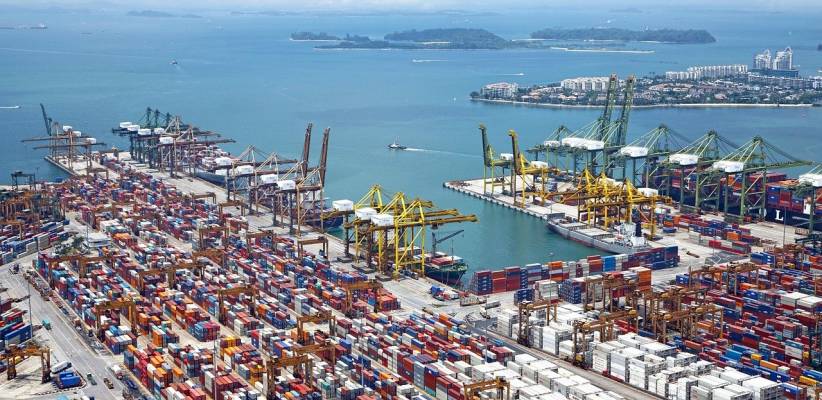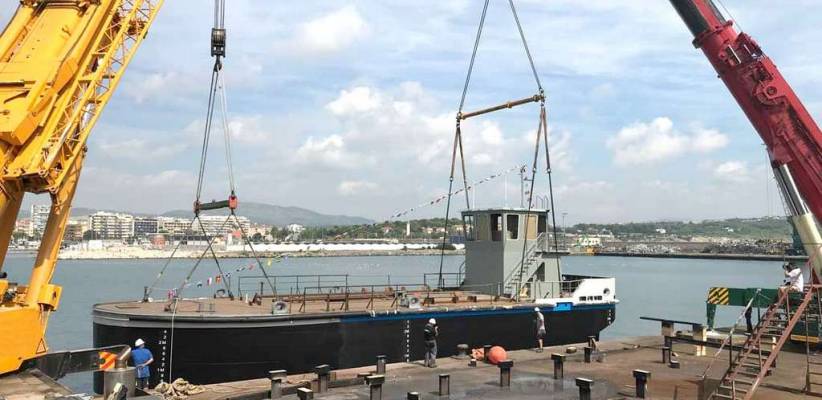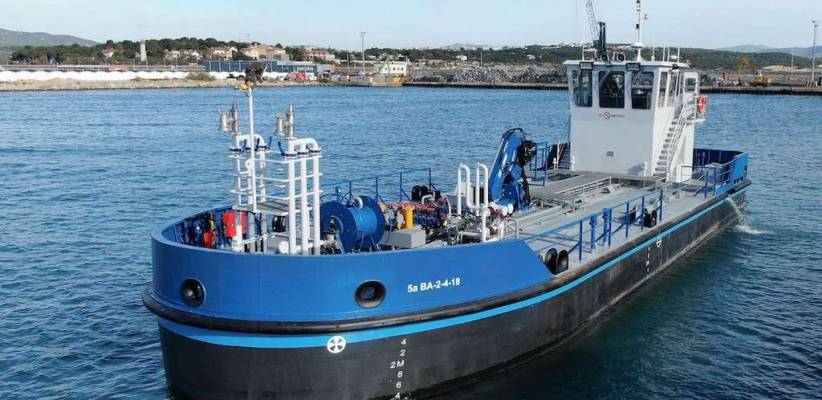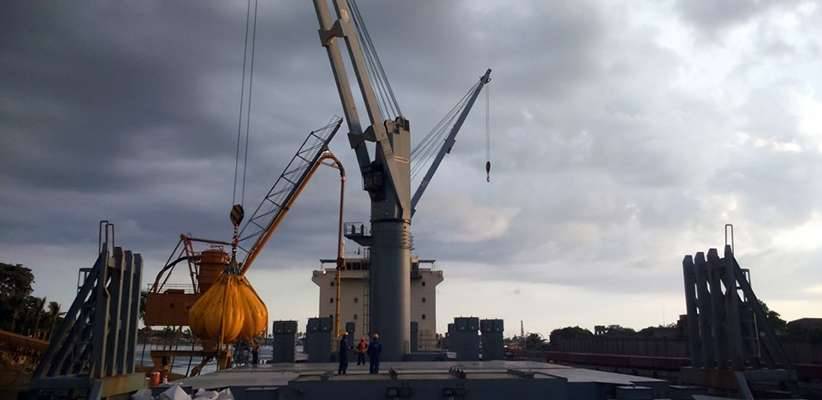Commercial ports are key infrastructures for the development of a territory. These represent a door to the world for the reception and shipment (import and export) of a wide variety of merchandise, contributing to the generation of wealth and favouring the development of commercial activity in its area of influence, popularly known as the hinterland.
Through the different and historical maritime routes, the connectivity of ports worldwide allows integrating all the regions of the planet, through a capacity known as foreland.
In this article we collect the most important commercial ports located in the Mediterranean Sea, taking into account the volume of merchandise and the container traffic they handle.
The Strategic Importance of Mediterranean Ports
The Mediterranean Sea has long been one of the most essential arteries of global commerce. Acting as a bridge between continents, its waters connect Europe, Asia, the Americas, and Africa, making it a critical hub for the movement of goods and services. Ports in this region serve as focal points for industries like automotive, energy, textiles, and consumer goods.
The strategic location of Mediterranean ports enhances their utility. They link the Atlantic Ocean, through the Strait of Gibraltar, to the Red Sea and Indian Ocean via the Suez Canal. This key positioning has made Mediterranean ports crucial for global supply chains, offering a direct route between Eastern and Western markets. With their large cargo volumes and capacity to handle transshipment, they facilitate the consolidation and redistribution of goods to Europe, North Africa, and the Middle East.
The bustling activity within Mediterranean ports is not just a reflection of their logistical role but also their economic importance. These ports serve as hubs for trade and industry, extending their influence across multiple domains, from shipbuilding to agriculture and heavy machinery. With their ability to integrate regions around the world through advanced connectivity—often referred to as their foreland—Mediterranean ports operate as pivotal facilitators of international trade.
Leading Mediterranean Commercial Ports
The Mediterranean hosts several major commercial ports, each uniquely positioned to support international trade and play a central role in the global economy. Here are seven of the most important ports in the region:
Port of Valencia (Spain)
The busiest container port in the Mediterranean, the Port of Valencia, serves as a critical gateway for trade between Spain, Europe, and global markets. Handling over 5 million TEUs (Twenty-foot Equivalent Units) annually, it accommodates goods ranging from consumer products to industrial machinery. Notably, it supports industries like automotive, textiles, and manufacturing while maintaining strong trade routes to Europe, Asia, and the Americas.
Port of Barcelona (Spain)
Known for sustainability and innovation, the Port of Barcelona handles over 3 million TEUs of container traffic yearly. It is instrumental for Spain’s chemical, automotive, and energy industries and features some of the most advanced logistics and distribution infrastructures in Europe. It’s not just a major commercial hub but a benchmark for eco-friendly port operations.
Port of Piraeus (Greece)
The Port of Piraeus, operated by COSCO Shipping, is a rapidly growing commercial hub, thanks to its proximity to the Suez Canal. Handling over 5 million TEUs annually, it plays a vital role in shipping, tourism, and retail. Additionally, its strategic position aligns with China’s Belt and Road Initiative, further solidifying its importance in global trade.
Port of Genoa (Italy)
Italy’s largest port, Genoa specializes in a mix of containerized goods, oil, and bulk cargo, processing around 2.6 million TEUs each year. Known for supporting petrochemicals, textiles, and heavy machinery, it maintains robust trade networks connecting Europe, North Africa, and the Middle East.
Port of Marseille-Fos (France)
France’s largest port, Marseille-Fos, is a significant player in the energy trade, particularly crude oil and natural gas imports, alongside its thriving commercial shipping activity. Handling over 1.5 million TEUs annually, it is a crucial hub for agribusiness and shipping, serving as a central link for France and Southern Europe’s import-export economy.
Port of Algeciras (Spain)
Located near the Strait of Gibraltar, the Port of Algeciras is one of the busiest in Europe, managing over 4.5 million TEUs every year. Renowned for its transshipment operations, it facilitates trade between Africa, Europe, and the Americas and supports industries like oil refining and fishing.
Port of Tangier Med (Morocco)
Africa’s largest port, Tangier Med, is technologically advanced and contributes over 7 million TEUs annually. It plays an essential role in the automotive, textiles, and logistics sectors, connecting Europe, West Africa, and Asia.
The Economic Impact of Mediterranean Ports
The role Mediterranean ports play in facilitating trade extends to their broader economic impact. Around 90% of global trade flows through maritime transport, making it the most cost-effective and environmentally efficient mode of shipping. For example, in Spain alone, nearly 60% of exports and 85% of imports pass through ports. These activities make up 53% of trade with the European Union and 96% with third countries.
Beyond trade, these ports contribute significantly to local job markets. The Spanish state port system, for example, creates over 35,000 direct jobs and supports approximately 110,000 jobs indirectly. Mediterranean ports are also vital in generating wealth along extended supply chains, fostering industries such as logistics, shipbuilding, and energy.
Challenges and Future of Mediterranean Ports
Despite their significance, Mediterranean ports face challenges that require immediate attention to ensure continued growth and efficiency.
Congestion and Infrastructure Demands: Increasing global trade volumes necessitate constant upgrades to port infrastructure. Ports must expand their capacity and invest in faster, more efficient technologies to avoid bottlenecks.
Environmental Sustainability: The maritime industry is under pressure to adopt green measures to reduce emissions. Ports like Barcelona, Valencia, and Tangier Med are leading in sustainability projects, such as promoting renewable energy and advanced recycling programs.
Geopolitical Tensions: The Mediterranean remains a region of geopolitical complexity, where trade routes are often affected by conflicts, regulatory changes, and international negotiations.
Digitalization and Automation: The adoption of automation and AI-driven systems is transforming logistics and operations. Smart port systems like those emerging in Genoa and Piraeus enable real-time decision-making, optimize resource use, and enhance security.
Beyond trade, these ports contribute significantly to local job markets. The Spanish state port system, for example, creates over 35,000 direct jobs and supports approximately 110,000 jobs indirectly. Mediterranean ports are also vital in generating wealth along extended supply chains, fostering industries such as logistics, shipbuilding, and energy.
Future Trends – Transforming Mediterranean Ports
Looking ahead, Mediterranean ports are poised to redefine their role in global trade with a sharp focus on innovation and sustainability. Technological advancements, such as smart port systems and AI-driven logistics, are revolutionizing operations, enabling efficient resource allocation, real-time decision-making, and enhanced security. Ports like Piraeus, with its AI-driven cargo handling, and Barcelona, using machine learning to predict congestion, are setting global benchmarks for efficiency and innovation.
Sustainability remains at the forefront of this transformation. As environmental regulations tighten, ports are integrating renewable energy sources, reducing emissions, and supporting circular economic models. The Port of Valencia’s goal of becoming a zero-emission hub and Tangier Med’s investment in solar energy exemplify how these initiatives are reshaping the maritime industry. Barcelona’s shore power facilities and Marseille-Fos’ commitment to alternative fuels further demonstrate how Mediterranean ports are leading the charge toward greener operations.
Automation and digitalization are also playing a critical role. The Port of Genoa’s use of blockchain technology to streamline customs processes and Algeciras’ automated mooring systems highlight how cutting-edge solutions are optimizing efficiency and transparency. Digital twin technology in Algeciras creates real-time simulations of port activities, while IoT-driven infrastructure in Barcelona ensures smooth cargo tracking and equipment performance monitoring.
Despite challenges like congestion, geopolitical uncertainty, and infrastructure demands, Mediterranean ports continue to act as catalysts for economic growth. Their ability to adapt through capacity upgrades, technological innovation, and diversified services reinforces their relevance as key nodes in a globalized economy. Ports like Tangier Med and Valencia are expanding their capacity to handle larger vessels and more containers, ensuring the region remains a crucial transshipment hub.
By championing sustainable practices and leveraging technological progress, these ports are not just preserving their strategic importance but carving out a leadership role in the future of international trade. This evolution ensures they remain indispensable connectors between East and West, driving commerce, innovation, and global connectivity forward.





